Oct 28, 2025 10:47 AM
In Memoriam: Jack DeJohnette, 1942–2025
Jack DeJohnette, a bold and resourceful drummer and NEA Jazz Master who forged a unique vocabulary on the kit over his…
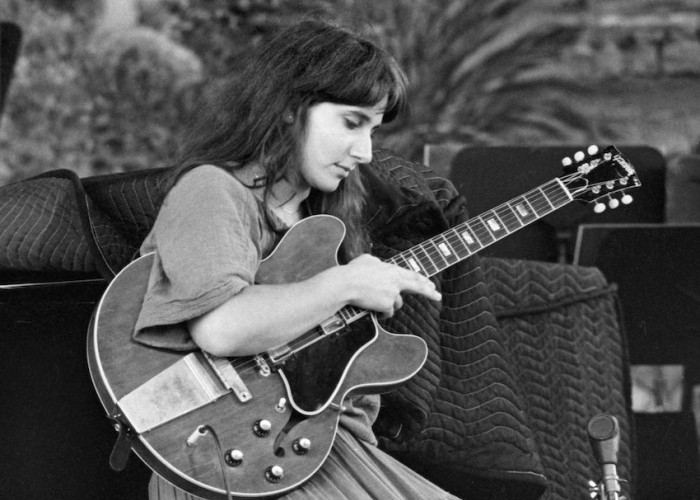
“She said, ‘A lot of people are going to try and stop you,’” Sheryl Bailey recalls of the advice she received from jazz guitarist Emily Remler (1957–’90). “‘They’re going to say you slept with somebody, you’re a dyke, you’re this and that and the other. Don’t listen to them, and just keep playing.’”
(Photo: Brian McMillen)In the April 1982 issue of People magazine, under the heading “Lookout: A Guide To The Up and Coming,” jazz guitarist Emily Remler famously said: “I may look like a nice Jewish girl from New Jersey, but inside I’m a 50-year-old, heavy-set Black man with a big thumb, like Wes Montgomery.”
It was a bold statement for the petite 24-year-old from Englewood Cliffs, but no bolder than the searing single-note lines and assertive sense of swing she had exhibited on her 1981 Concord Records debut, Firefly. Remler won acclaim through that decade on the strength of five celebrated albums for Concord, culminating with 1988’s East To Wes, a tribute to her guitar idol, Wes Montgomery. Her seventh and final album, This Is Me, was released posthumously in October of 1990, five months after she had passed from a drug overdose while on tour in Sydney, Australia.
During her relatively brief time in the spotlight, Remler served as a role model for a generation of female jazz guitarists who were on the scene. And now with the release of Cookin’ At The Queens (Resonance Records) — a series of live recordings from 1984 and 1988 at the French Quarter Room in the Four Queens Hotel of Las Vegas — a new generation of women jazz guitarists are feeling Remler’s profound influence, nearly 35 years later.
In a May 1982 DownBeat profile, Remler told writer A. James Liska: “My career is moving very quickly, and that whole woman thing has put me outfront and helped me get noticed. But when I’m playing, I forget if I’m a girl or a boy or a cat. It’s when I leave the stage that I remember.”
She added that being a woman jazz guitarist worked both for and against her. “Some people like me because of the mere fact that I play. Those are the ones that judge too softly. Then there are those — I’ve had this happen — who come in and sit right in front of me, cross their arms and say, ‘This, I’ve got to see.’ Then there are the people who are prejudiced, and they just sit there and wait for the mistakes. It works to your advantage if you’re pretty good, but if you’re not good, it works to your disadvantage.”
Remler later elaborated to Julie Coryell in a May 1985 DB feature about the sexism that she continued to encounter in her career.
Julie Coryell: As a woman, did you have to work harder to be accepted?
Emily Remler: I still do. I didn’t conquer it. Are you kidding? Now they know that I can play. But I still have to prove myself every single time. The only thing is that I’m not intimidated anymore. There was a time when I came fresh out of Berklee with the competitive frame of mind. I would ask to sit in. ‘Oh, please, can I just play one tune? I won’t screw things up.’ And secretly, I was thinking, ‘I’ll go up there and burn their asses off.’ That’s how I felt then. Now I realize that if you’re thinking of that stuff, you’re not thinking of creativity and all these other things that I’m supposed to be doing in my solos. So I had to can that. I have to rise above it by playing good. You don’t get angry, you don’t get bitter, you don’t get feminist about the thing. You don’t try to make a statement for women. You just get so damn good that they’ll forget about all that crap.”
As drummer Bob Moses, who played on two Remler albums (1983’s Transitions and 1984’s Catwalk), stated in his testimony for Cookin’ At The Queens: “She was smart. Lots of men tried to keep her down, but she did didn’t back down. She was strong. Her music was swinging.”
Like Mary Osborne decades before her, Remler was a role model. Ten women, all jazz guitarists on the scene today, spoke to her influence for this article: veterans like Leni Stern, Mimi Fox, Margaret Slovak, Mary Halvorson, Sheryl Bailey, Amanda Monaco and Jane Miller, along with rising stars Camila Meza, Jocelyn Gould and Eleonora Strino. They weigh in on the impact that Remler made during her short but potent career, one that continues to this day.
Camila Meza: Nobody talked about Emily when I was growing up, which is understandable coming from Chile, where even getting to Wes Montgomery was an immense bit of luck. I was searching for more John Scofield material when I came across a video of a Berklee School of Music performance [from 1988] of him playing a duo version of “Stella By Starlight” alongside a woman so fluent and strong. I was in disbelief since I literally had never seen a woman guitarist playing jazz.
It was such an inspiring moment. When I heard Emily’s playing, I was in awe of how much tradition she was embodying. The amount of study really shows on how solid she was as a player. Over the years you see her searching and evolving into a more personal voice but keeping the best from Wes’ school: a beautiful tone and language, hyper-intentional melodic storytelling, impeccable time feel, harmonic richness, soul and blues. ... She really had it all.
Mary Halvorson: When I was a teenager, people would say, “Oh, you play jazz guitar? You must love Emily Remler.” And this happened to me over and over, which is really interesting because it shows you how few female jazz guitarists there were at that time. When I started playing, I really didn’t have a female role model on guitar, so she was probably the only female jazz guitarist that I really knew about that was somewhat current, even though she had died when I was 10. So I thought, “I’ve got to check her out.”
At that point, I started listening to her record East To Wes, which was just super cool. Obviously, she’s an incredible player with completely fluid, amazing technique and a great feel. She just had such an effortless way of playing. But there’s also an intensity and an edge and a real kind of driving energy to her playing on that album, which I really relate to and gravitate towards.
Margaret Slovak: Emily came on my radar during my senior year of high school in 1980. I was living in Denver, and there was a jazz series there put on by this gentleman named Dick Gibson. These were big jazz parties where there’d be like 20 musicians onstage. And I remember seeing in the paper that Emily was going to be playing at the Gibson party that year. So I got a ticket, which was way back in the last row in this big theater in Denver.
I remember seeing her sitting in a chair on stage with her red Gibson [ES-330] guitar. She was the only female on the stage, and I was just so inspired by that. I was like, “Oh, my gosh! There’s a woman up there playing jazz guitar!” And I recall that on the very first tune of the concert, after they played the head, they pointed to her to take the first solo. And I remember thinking, “Wow, that’s a lot of pressure for a young woman to be up there with all those guys and have to take the first solo like that. Are they doing it because they’re being courteous? Or are they trying to put her on the spot?” But she played beautifully and just aced it.
Jocelyn Gould: The first time I heard Emily on record was in 2010 when I was 19. She’s always been a legendary figure to me.
When I was teaching my guitar classes I found it interesting that so few students had ever heard of her, so I’d introduce them to her through these intensive listening sessions we’d do to open the class. And a number of young women students just couldn’t believe it. They came up to me after class and said, “Why did nobody ever tell me about this titan on the instrument?” So I loved to play her music to my students and then just talk about tone and swing and feeling and soulful playing. Emily is a master class in all of those things.
Eleonora Strino: I discovered Emily through her record Firefly, which was a revelation to me. Sometimes we can imagine women as being more fragile, but she had a big, forceful sound. I really loved her hard-bop playing, and I wanted to develop that same sound. So I began transcribing her solos from Firefly as well as some standards she played on her next album, Take Two, like “In Your Own Sweet Way” and the Dexter Gordon tune “For Regulars Only.” I also transcribed her solo on “Hot House” from her album East To Wes.
Of course, you can hear the influences of Wes Montgomery and Pat Martino on those albums. But her album Catwalk was full of her own compositions, and some of those tunes reminded me of the Mediterranean/Neopolitan sound that I also have in my own compositions. You can hear that she was searching for her own personality on that album, and this is the job I’m doing now.
Amanda Monaco: I was in high school and very much into Miles and Wayne and Coltrane and Wes when my guitar teacher told me, “Hey, there’s this female jazz guitarist named Emily Remler. You should check her out. Here’s a cassette.” It was her last album, This Is Me. And it wasn’t like the kind of jazz I was listening to at the time; it was more light fusion-y stuff. But I noticed how amazing her composing was on that album. The songs were more pensive and varied, but she also reminded you all over that record what a badass she was, as far as playing is concerned. She absolutely shredded on that record. When she soloed on those tunes, she would go right back into that Pat Martino-ish kind of vibe that she had on Firefly, Take Two and East To Wes. So there were these seeds that were planted on This Is Me, and that record made me ask more questions than it answered.
Sheryl Bailey: I took a lesson with Emily when I was a student at Berklee. I went back home to Pittsburgh during spring break and a friend of mine, the pianist David Budway, who was my teacher when I was a kid, called me and said, “Ems is in town! Here’s her number. Give her a call. Get a lesson.” So I did, and I ended up hanging out with her all day. She was in a rehab program in Pittsburgh at the time, and she was clean and just on fire — so focused and just there with everything. So I came for a lesson and afterwards she’s like, “Hey, let’s hang out and play!” She just wanted to jam, but the lesson was great.
Emily was a great teacher. She zeroed in on exactly what I needed to work on, and I’ve taken a lot of stuff she showed me then and sort of expanded on it for my students. Her thing about swing and articulation was so spot-on. It’s based on something called the picking dynamic, which is about what swing really is — where the accent is and getting control of that. It’s a very technical alternate-picking right-hand study based on something that Pat Martino showed her. That was really eye-opening and it changed my technique. It’s something over the years that I go back to and I keep developing. Still to this day, I run through those picking studies just to warm up and get centered.
Jane Miller: The thing that instantly impressed me about Emily’s playing? Tone and chops. And pace. To hit that sweet spot of chops with taste is not easy. But Emily really hit that sweet spot for me. She had a signature sound with her Gibson [ES-330], but even when she played acoustic guitar or a solidbody, there was still that combination of taste and tone that would always sound like her.
Emily modernized things. She was pretty forward-thinking while honoring those she learned from.
Mimi Fox: I just loved her melodicism. I found her playing very lyrical. To me, that’s a really great compliment you can give an instrumentalist. It means more than, “Oh, she can burn. She’s got good chops.” Because lyrical, to me, means you’re telling a story. It’s the whole essence of what jazz is about, which is telling a compelling story.
Amanda Monaco: The thing that always impressed me about Emily was her time feel and her execution on the instrument. I was listening to something yesterday from Firefly, and there’s this one thing she did at the end of the title track where she’s playing double-stops, and I could not for the life of me figure out how she did that. It just didn’t sound humanly possible.
Margaret Slovak: Her tone was just like a bell. So clean. And her rhythmic lines were so fluid and lyrical, and she swung so hard. One of the things I really admire about Emily’s playing is that even though she had the facility to play a zillion notes, she would leave space, so her lines had even more impact. And there’s also a lot of soul in her playing, a lot of warmth. Plus, the way she comps when other players are soloing is so beautiful. It’s like she never tried to overplay or show off.
Camila Meza: I think as female players we all feel inadequate in one way or another at a certain point in our careers, sometimes at many points. It’s a matter of fact that you never cease having to prove yourself. And on the other hand, personally, even when I’m achieving great things, I question if I deserve the recognition, or if I’m good enough. The way I deal with it is I try to stay close to what moves me to make music, which is very far from having to show anybody that I can do it. It’s because I need to, and it heals me. And that’s a pretty rooting reason.
I went through the exact same situation as Emily (more than 20 years later) where she says she wasn’t called at a jam session because they judged her as not being an actual jazz guitarist, but a songwriter. I remember going to the old Fat Cat and being turned away by the jam session host because, “This is not a singer-songwriter’s session.” I was a woman holding a guitar, so I didn’t fit in. But Emily showed us that you can be a woman and play jazz guitar at the highest level.
She was breaking stereotypes just by being herself, which is not easy to do. I think about how hard it must have been for her to show up at a jam session as a female guitar player in New York in the ’80s. The cultural context you develop in completely shapes you as a person and, therefore, as an artist.
Eleonora Strino: I think for a woman to be accepted in this jazz world is, obviously, more difficult. Especially when you are in the early stages and not yet a “professional” musician, the male musicians will at times approach you with this attitude of, “Oh, it’s a girl playing guitar!” They don’t take you seriously.
My advice for men is to try not to consider women like sexual objects and to treat the women musicians just starting out with respect so they do not have to be “warriors” to become a good musician. Because it’s true, when you are a woman in this jazz world you have to be many times better each time that you play. Emily felt that, and I still feel that today. So I just try to develop a big sound and play aggressively, as Emily did.
So I am indebted to her. I think Emily had it worse than me because she was one of the first women to play a different instrument, not piano or a singer. We had to fight, too, but now we are in a better moment. It’s still difficult for women jazz musicians. Because I sometimes still feel the pressure. You never know if you play good or if you play good “for a woman.” It’s something that stays in your mind. But I think the world will be better for my students [at the Conservatory in Consenza] and other women musicians just coming up now. And we have pioneers like Emily Remler to thank for that.
Sheryl Bailey: When I was hanging out with Emily that day I took a lesson with her, at some point she said to me, “Don’t stop playing. Never stop doing what you’re doing.” She said, “A lot of people are going to try and stop you. They’re going to say you slept with somebody, you’re a dyke, you’re this and that and the other. Don’t listen to them, and just keep playing.” And I cherished that moment.
Now I’m the assistant chair of the guitar department at Berklee, and I have shared that story with several young women who came in who were like, “I’m going to quit the performance major. I’m just so tired of all this sexist bullshit.” And I’ve told them what Emily told me. And you know what? They all hung in. So I feel like that thing that Emily told me has been one of the biggest things that I can do in mentoring young players.”
Mary Halvorson: Because she was really one of the few women guitarists doing it on that level at the time, I think she really used that as motivation. Like, “OK, if I’m gonna do this, I’m going to work really hard and I have to be the best.” That’s the sense that I get. I think that she felt like she constantly had to prove herself.
Even once people realized she could play, she had to prove herself over and over again. For some people, that can be crushing and make you stop playing entirely. And for other people, it can be motivating. And it sounds like she had that real intensity of personality too to persevere.
Leni Stern: Emily made no apologies for swinging so hard. Her time was flawless and she played better than a lot of the guys that came up with her. I always enjoyed it so much when she would sit in with a bunch of male musicians and then proceed to kick everybody’s ass, because nobody expected it.
Even after it was known how well she played, people still wouldn’t believe it. But she’d come and whoop everybody’s ass again. But I also know the pressure she experienced and know how difficult it was — and to some degree still is — to be a female jazz guitar player. But Emily was the kind of girl that would say, “Fuck it!” and go do it anyway. But that didn’t prevent the hurt from happening.
Mimi Fox: I think to some extent with all jazz musicians there’s always a part of them that has an imposter syndrome, but it’s always harder for women just because of the culture. I think women can have a tendency to try to prove themselves. And if you’re constantly trying to prove yourself, that gets in the way of the music because you can’t just relax and let the music flow. And I think that can be a tough thing.
I was fortunate to have found some supportive men along the way who really wanted the best for me and gave me an extra oomph because they knew, and they felt in their heart, it was the right thing to do. They knew I was facing a little extra B.S. in my life being a woman playing jazz.
Of course, I have horror stories about guys that were jerks, but I also have men that have been complete menches and really went out of their way to go the extra mile for me, including Steve Vai. So now I tell my students, “If you meet jerks, just lose them.” I think a common mistake young women make is if someone’s a jerk to them, they tend to personalize it and think something’s wrong with them instead of thinking that the guy’s just being a jerk and is probably a jerk to other women, and also to other men.
But women tend to personalize things. Again, it’s a cultural thing, and it takes a long time to overcome some of that stuff. Like the saying goes: Old habits die hard. But the jazz community has moved forward and it’s really heartening to see all the changes that have happened since Emily passed.
Jane Miller: Being a woman guitarist in a so-called men’s arena is something that Emily acknowledged, sometimes even in a lighthearted way. Meaning, she didn’t let it get to her in any kind of way that held her back. It’s more like recognizing something that’s a little weird, and then you just carry on.
You just play. And that other stuff — male versus female players and difficulties in that world — didn’t really affect the music, in her mind. That could be what was simmering underneath, but with Emily it was always about the music. And she just laid it down with such clarity and cleanliness and precision, but also fire.
Amanda Monaco: Today there are many more women playing guitar at Berklee than there ever used to be. I think it’s doubled since Kim Perlak became the chair and Sheryl Bailey became the assistant chair.
So now the guitar department at Berklee is run by two forward-thinking women, which is pretty freakin’ cool. But there still is a prevailing feeling that goes along with being a female jazz guitarist. It’s getting better, but define “better.”
You know, that sexist shit still happens. I still get asked when people see me with my guitar if I’m going to sing, and I’m like, “Trust me, you really don’t want to hear me sing.” So that is still a thing that female guitarists are subjected to, but the jazz musicians themselves now are just more welcoming. … So things are changing, and Emily was definitely a pioneer in shifting attitudes. DB
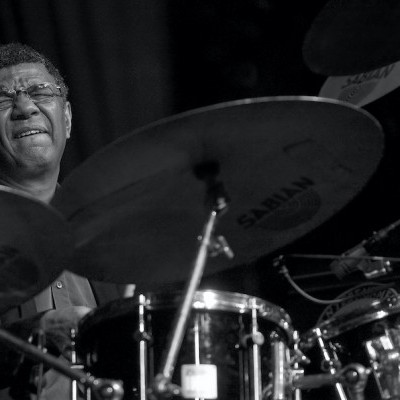
Jack DeJohnette boasted a musical resume that was as long as it was fearsome.
Oct 28, 2025 10:47 AM
Jack DeJohnette, a bold and resourceful drummer and NEA Jazz Master who forged a unique vocabulary on the kit over his…
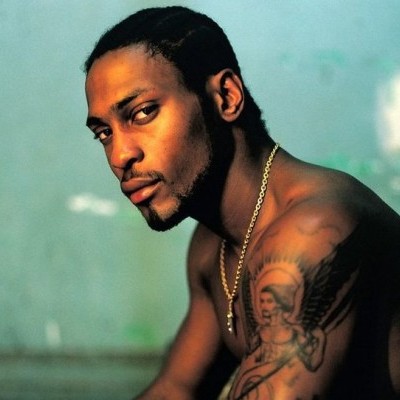
D’Angelo achieved commercial and critical success experimenting with a fusion of jazz, funk, soul, R&B and hip-hop.
Oct 14, 2025 1:47 PM
D’Angelo, a Grammy-winning R&B and neo-soul singer, guitarist and pianist who exerted a profound influence on 21st…
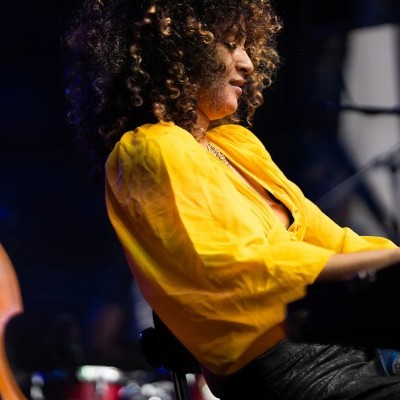
Kandace Springs channeled Shirley Horn’s deliberate phrasing and sublime self-accompaniment during her set at this year’s Pittsburgh International Jazz Festival.
Sep 30, 2025 12:28 PM
Janis Burley, the Pittsburgh International Jazz Festival’s founder and artistic director, did not, as might be…
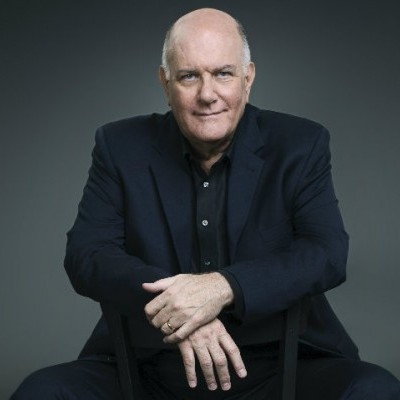
Jim McNeely’s singular body of work had a profound and lasting influence on many of today’s top jazz composers in the U.S. and in Europe.
Oct 7, 2025 3:40 PM
Pianist Jim McNeely, one of the most distinguished large ensemble jazz composers of his generation, died Sept. 26 at…
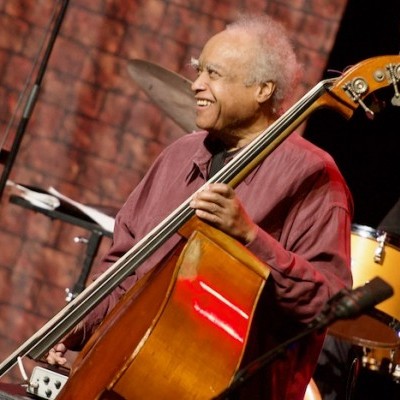
Drummond was cherished by generations of mainstream jazz listeners and bandleaders for his authoritative tonal presence, a defining quality of his style most apparent when he played his instrument unamplified.
Nov 4, 2025 11:39 AM
Ray Drummond, a first-call bassist who appeared on hundreds of albums as a sideman for some of the top names in jazz…